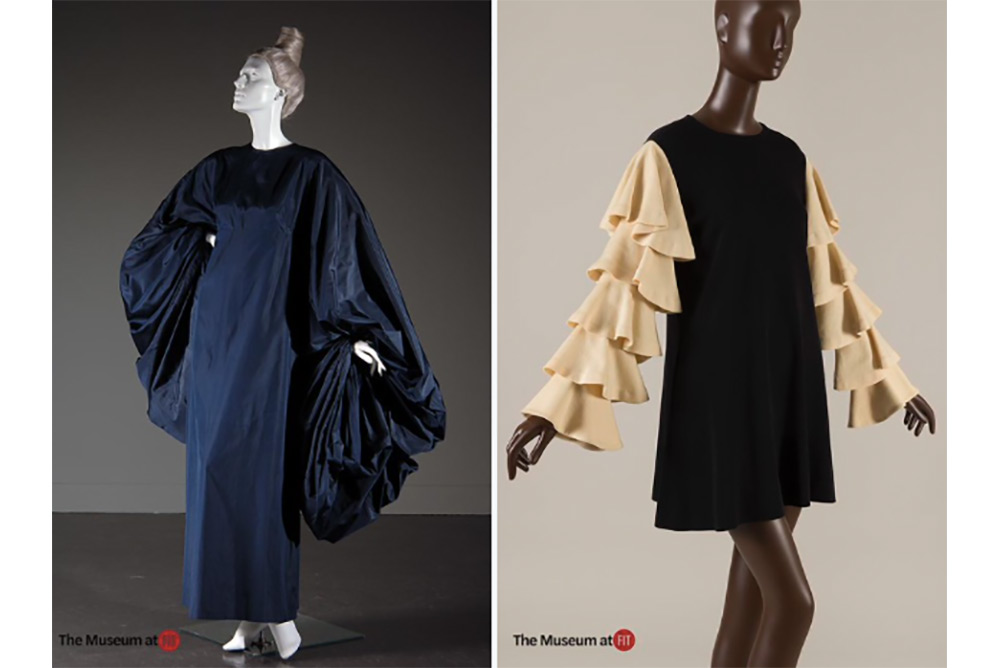
From the “Statement Sleeves” exhibit at The Museum at FIT. Left, from Madame Grès, a navy blue silk taffeta evening gown, circa 1980. Gift of Mrs. Mildred Hilson. / Right, from Rudi Gernreich, a black and cream wool dress, circa 1967. Gift of Ruth Ford. / On the front: from the FIT “Statement Sleeves” exhibition. All copyright © The Museum at FIT.
By Nancy McKeon
WHEN SOMEONE mentions sleeves to me, my first thought is “short or long?” Not very evolved, especially in the past few years when, as Janet Kelly points out, designers and manufacturers have been using sleeves to carry a lot of their fashion message.
FIT, New York’s Fashion Institute of Technology, has a current exhibit that allows those of us who are behind the curve to swot up on sleeve action. The exhibit also shows how many things old are new again: Designers themselves acknowledge they’re always looking through history to be inspired by old ideas that can be made new and now.
But rather than hew to a chronology of sleeves, Colleen Hill, the museum’s curator for clothing and accessories, has focused on variations, which has the benefit of showing how ideas—and lotsa fabric—ebb and flow over time.
In usual FIT fashion, the “Statement Sleeves” exhibit keeps it simple, with emphasis on the clothing, the detail, the execution. In fact, the opening Fundamental Forms installation, see below, shows eight garments (one a gentleman’s robe) all in black, the better to show some of the basic sleeve treatments: the bell sleeve, the bishop sleeve, the puffed sleeve, the slit, the kimono-inspired, and . . . the detachable sleeve (who knew?).
Once the fundamentals are out of the way, the exhibit goes on to show how the shapes have been embellished, modernized, or simply exaggerated over the years. The nearly 80 garments on view are from the museum’s permanent collection, the majority being displayed for the first time.
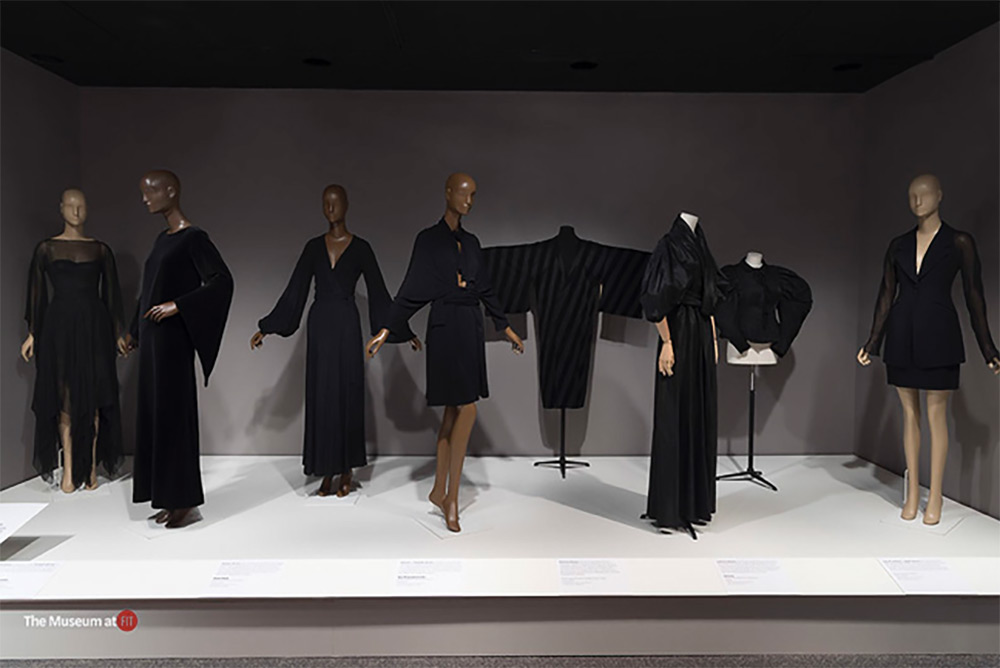
Fundamental Forms. From left to right: dress by Madame Grès, 1978 (angel wing sleeves); dress by Yves Saint Laurent, circa 1968 (bell); dress by Ossie Clark, circa 1970 (bishop); dress by Ann Demeulemeester, fall 2001 (batwing); man’s robe, circa 1925 (kimono); evening coat by Vionnet, 1938 (lantern); jacket, circa 1895 (leg-of-mutton); suit by Fendi, circa 1993 (raglan). Copyright © The Museum at FIT.
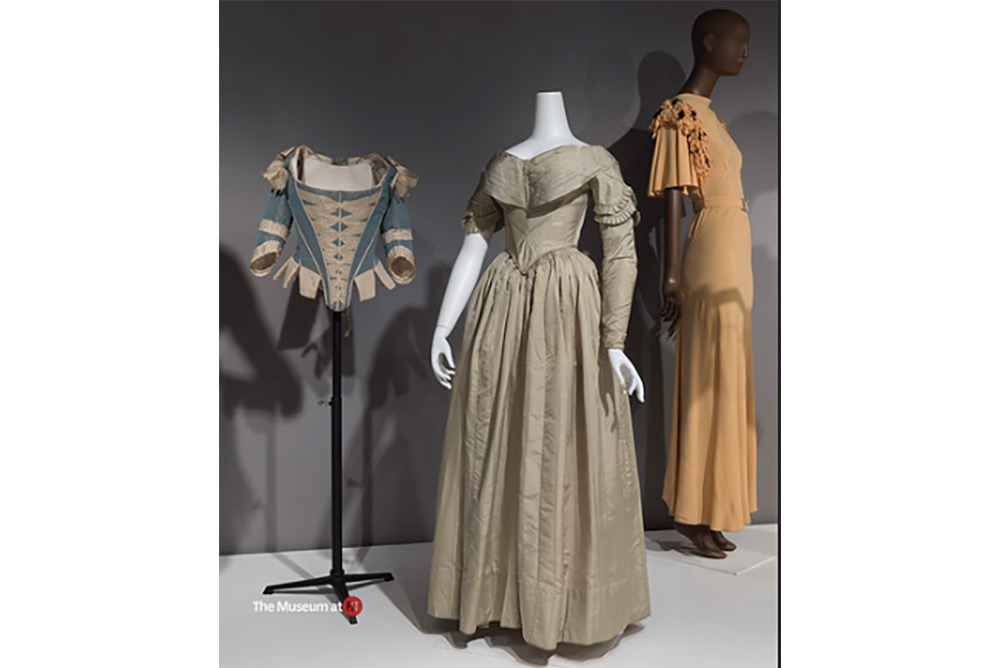
A portion of the Performance & Purpose section, all with removable sleeves. From left to right: corset, circa 1770; dress (one sleeve on, one off), circa 1840; dress, circa 1933. Copyright © The Museum at FIT.
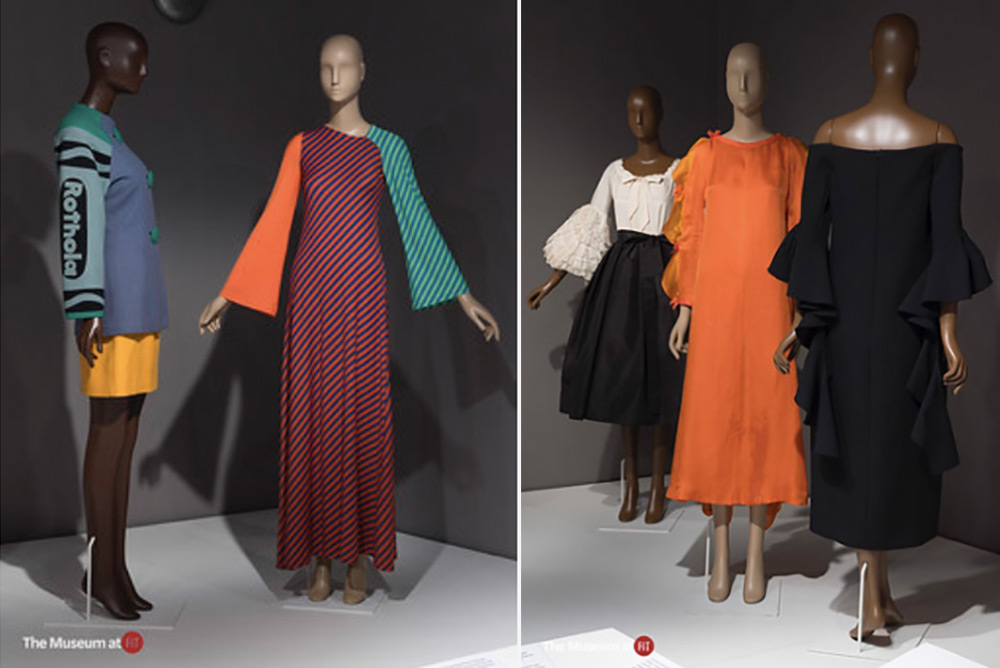
Left, two styles from the Asymmetrical & Mismatched section of the exhibition: a fall 1990 suit by Christian Francis Roth (left) and a circa 1973 dress by Stephen Burrows (right). Copyright © The Museum at FIT. Right, designs in the Tucks and Ruffles section of the exhibition. From left to right: blouse by Givenchy, circa 1952; dress by Courrèges, circa 1969; dress by Ellery, 2016. Copyright © The Museum at FIT.
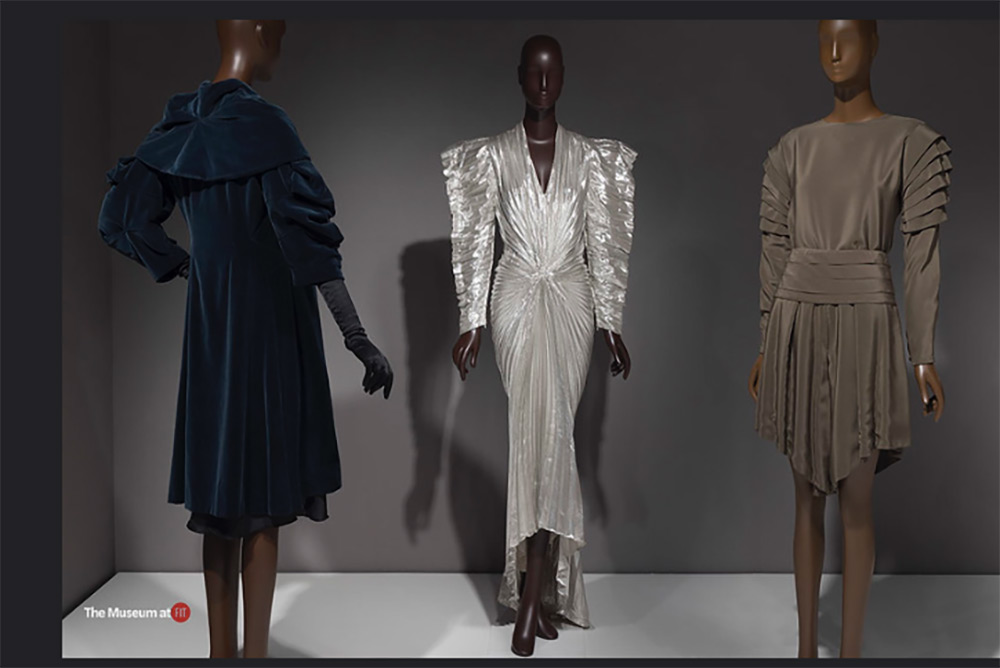
A selection from Tucks and Ruffles. From left to right: evening coat by Mae and Hattie Green, circa 1928; dress by Thierry Mugler, fall 1979; ensemble by Armani, 1982. Copyright © The Museum at FIT.
“Statement Sleeves,” The Museum at FIT, 227 West 27th Street, New York, NY 10001, fitnyc.edu; through August 24, 2024. The museum is open Wednesday through Friday, noon to 8pm; Saturdays and Sundays, 10am to 5pm.

Fascinating. Thanks for the report.